Officials urge public to destroy spongy egg masses in US to prevent lanternfly infestation in May
It’s that time of year again: the invasive spotted lanternfly is laying its eggs on the US East Coast, and government officials are scrambling to destroy them on the spot.
The U.S. Department of Agriculture (USDA) has urged Americans to be alert for spongy, brown masses of eggs laid by the insect that will emerge as adults later this year and cause $550 million in damage to crops and trees .
Spotted lanternfly egg masses can be spotted on trees, vehicles and other outdoor surfaces as winter turns to spring – and they are expected to hatch in May.
USDA officials recommend scraping the eggs from the surface, placing them in a plastic bag and throwing the bag in the trash — this will ensure none survive.
Spotted lanternflies lay their eggs on trees, cars and almost any hard surface. USDA recommends discarding the mass, placing it in a plastic bag and throwing it in the trash.
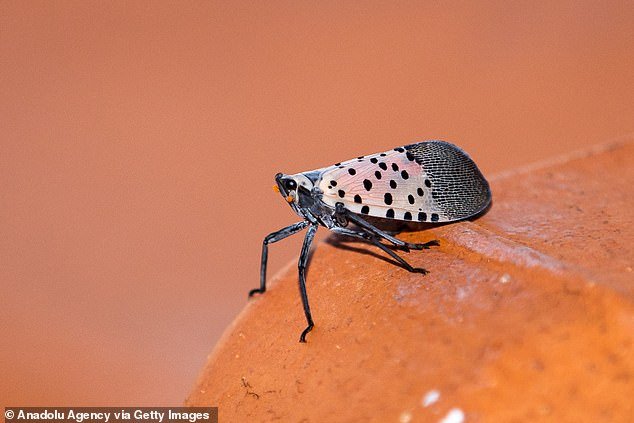
The spotted lanternfly is not a fly, but a type of leafhopper. It can be recognized by its characteristic spotted forewings with black veins at the tips
On hard outdoor surfaces, USDA officials recommend using a pressure washer to remove and destroy the eggs.
Many insects stick to a small number of favorite foods, but not the lanternfly.
Once the eggs hatch, these invasive insects will feed voraciously on more than 100 different plants, including commercially important food crops such as apples, pears, walnuts, peaches, plums and grapes.
Their distinctive spotted forewings and bright red underwings make them stand out, but the beautiful insects are destructive.
Spotted lanternflies, native to Southeast Asia, are now found in 17 states and contribute to an estimated $40 billion annually in damage caused by invasive species.
The spotted lanternfly was first reported in Pennsylvania in 2014, but experts now say it is now found in at least sixteen other states: Connecticut, Delaware, Illinois, Indiana, Kentucky, Maryland, Massachusetts, Michigan, New Jersey, New York, North Carolina, Ohio, Rhode Island, Tennessee, Virginia and West Virginia.
“Invasive insects and plant diseases, such as the spotted lanternfly, sponge moth, citrus greening and many others, cost the U.S. an estimated $40 billion annually in damage to crops, trees and other plants.” said Kathryn Bronsky, national policy manager for the spongy moth at USDA’s Animal and Plant Health Inspection Service (APHIS).
“Together we can make a difference,” Bronsky said.
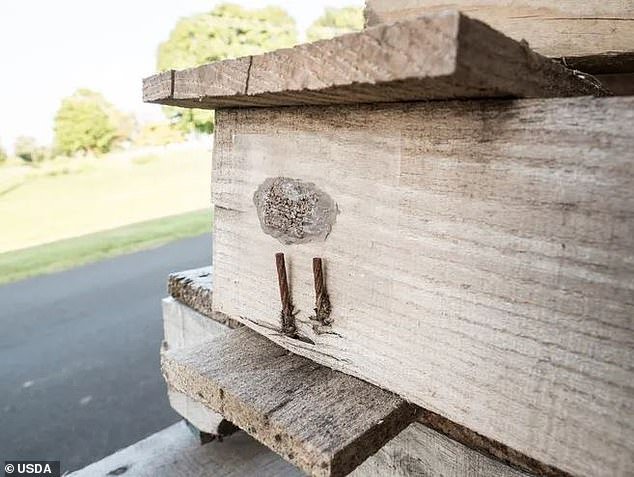
Courtesy of the USDA, this spotted lanternfly egg mass was spotted on a pallet in Lancaster, Pennsylvania on August 29, 2018.
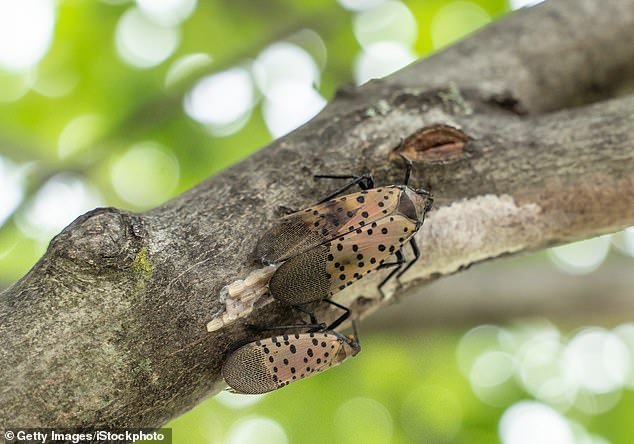
This lanternfly was caught laying eggs on a tree branch in Berks County, Pennsylvania.
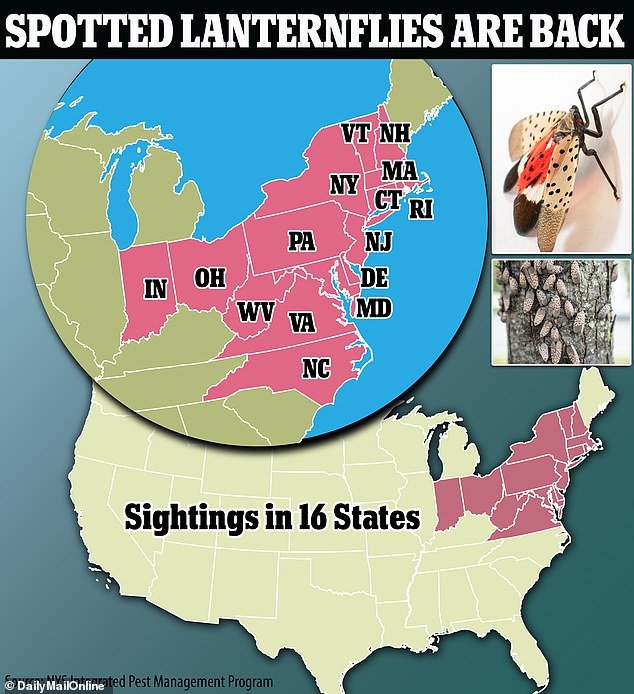
In this 2023 chart, states with observations included Pennsylvania, Connecticut, Delaware, Indiana, Maryland, Massachusetts, Michigan, New Jersey, New York, North Carolina, Ohio, Rhode Island, Virginia, New Hampshire, Vermont, and West Virginia
Because lanternflies can lay eggs on vehicles, they have easily spread across states.
They can even attach themselves to planes and trains, USDA officials say.
Matthew Travis, USDA APHIS national policy manager for the spotted lanternfly, encouraged U.S. residents to “look for masses of invasive pest eggs on outdoor surfaces such as tree bark, cars and items you keep outdoors in late fall, winter and early spring.”
“If you find them, remove them to prevent them from hatching in the spring, or worse, hitching a ride on the cars we travel in, or on the firewood and outdoor gear we move to new places,” Travis said.
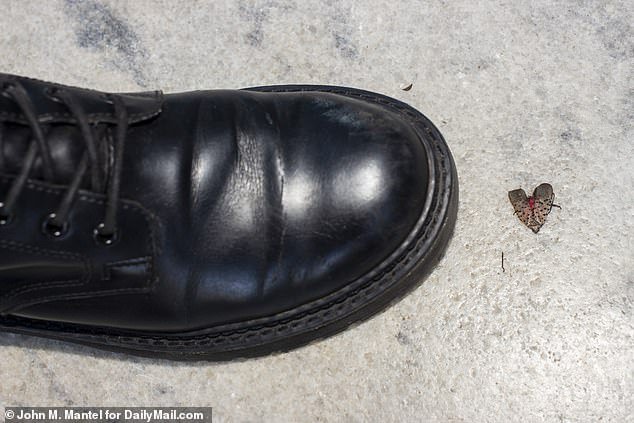
License to Kill: Agriculture officials want all U.S. residents to take it upon themselves to kill the spotted lanternfly when they see it.
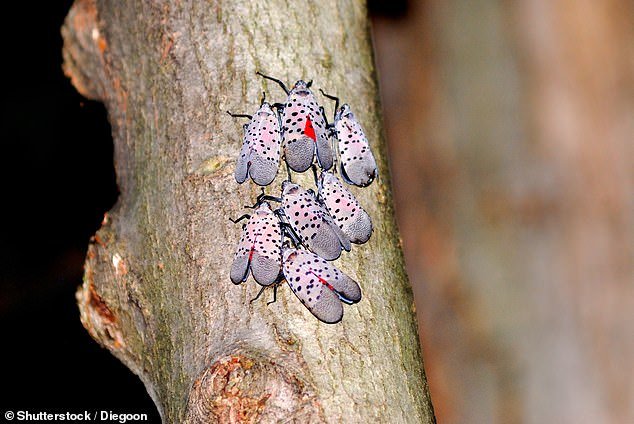
Despite being visually striking, the spotted lanternfly is destructive and chews on more than 100 different ornamental and food plants.
USDA now estimates that the lanternfly is in 17 states.
They have exploded in numbers because they have no natural predators in the US.
When they feed on plants, they secrete a sticky, sweet substance that promotes the growth of fungi.
Even if their feast doesn’t kill the plants, the fungus can.
Experts fear that, in addition to food crops, hardwoods used for lumber could fall prey to the lanternfly.
So do your part, experts urge, and destroy a spotted lanternfly egg mass.
